Pharm final exam review PDF

| Title | Pharm final exam review |
|---|---|
| Author | Beatrix Israel |
| Course | Clinical Pharmacology in Nursing Practice |
| Institution | San Diego State University |
| Pages | 16 |
| File Size | 622 KB |
| File Type | |
| Total Downloads | 16 |
| Total Views | 151 |
Summary
This is the final pharm exam for Concilio. ...
Description
Drugs for Coagulation ! Generic/Trade Names
Indications
Action
Adverse Effects
Contraindicati ons
Drug interactions
Heparin (intrinsic) anticoagulant
-prevention of clot formation ! -ex. patients at risk for PE and DVT: prolonged immobility, trauma, lower extremity surgery, hyper coagulability, estrogen therapy
-prevents clots from getting larger and new clots by activating antithrombin III and subsequently inhibit thrombin (acts quickly) ! *can’t dissolve existing clots
-bleeding -> shock! (trend hemoglobin and hematocrit, if they trend down = bleeding)! -normal aPTT = 60-80 sec! high aPTT = risk for bleeding
-patients with active internal bleeding, severe HTN, recent trauma, intracranial hemorrhage, or bacterial endocarditis
-warfarin potentiate heparin activity (transition from heparin to warfarin increases risk for bleeding)! -Aspirin, indomethacin and ibuprofen induce bleeding
Warfarin/ Coumadin (extrinsic) anticoagulant
-prevention of clot formation! -patients who need warfarin ! 1. previous embolic and ischemic stroke ! 2. atrial fibrillation even there’s no regular rhythm, blood doesn’t move and it will clot ! 3. DVT
-inhibits enzymes involved in the formation of Vitamin K (vitamin K antagonist)! -takes 3-4 days for it to take effect
bleeding, atheromatous plaque -> cholesterol microembolizat ion and may lead to gangrene/ amputation! -normal PT= 12-15 sec! -avg. INR = 2.5
-same as heparin ! -severe hepatic or renal impairment ! -don’t give warfarin/ Coumadin to pregnant patients Category X (give heparin or low molecular weight heparin)!
-Aspirin, heparin, and anti platelet drugs, NSAIDs = bleeding! -limit vitamin K foods (green leafy vegetables) counter the effect of Coumadin !
Clopidogrel (Plavix) antiplatelet
-prevention of clot formation ! -more effective than aspirin for prophylaxis of arterial thromboemboli sm to reduce risk of stroke and MI
-inhibits ADP receptors on platelets and prolongs bleeding time by irreversibly inhibiting platelet aggregation ! -only 6-12 mo.
-bleeding, but has a lower incidence of GI bleeding than Aspirin ! -flulike symptoms: headache, diarrhea, dizziness
-patients with active bleeding and peptic ulcer! -drug should discontinued 5 days prior to surgery
-Aspirin, anticoagulants, thrombolytics = risk of bleeding! -Herbal: green tea, gingko, ginger, garlic = bleeding
Generic/Trade Names
Indications
Action
Adverse Effects
Contraindicati ons
Drug interactions
Dabigatran (Pradaxa) direct thrombin inhibitor
-stroke prophylaxis and treatment of DVT and PE
-directly inhibits the action of thrombin
-bleeding, hypersensitivity dyspepsia, gastritis
-patients with active bleeding, impaired hemostasis, severe renal impairment
-other anticoagulants increase risk of bleeding! -ginger, garlic, green tea, St John’s wort
Abciximab (ReoPro) antiplatelet
-prevention of clot formation ! -glycoprotein IIb/IIIa receptor inhibitors prevents platelet activation and thrombus formation in patients with MI, stroke
-binds to glycoprotein IIb/IIIa receptors on platelets which prevents fibrinogen from activating platelets! -given with aspirin, Plavix or heparin = effective result
bleeding, hypotension
-patients with active internal bleeding, recent trauma or surgery, serious bleeding disorders
-heparin, other coagulants, thrombolytics = bleeding
Alteplase (Activase) thrombolytic
-removal of an existing clot in acute MI, PE, acute ischemic stroke, DVT! -emergency treatment for MI
-convert plasminogen to plasmin which dissolves fibrin clots ! -effective when given ASAP after the clot has formed (within 4 hrs)
-bleeding, thrombolytics are nonspecific in dissolving normal and abnormal clots! -dysrhythmias (fibrinolysis in the coronary arteries)
-patients with recent trauma, active bleeding, or surgery may have fresh clots.
-Aspirin, anticoagulants, antiplatelets = risk of bleeding! -Herbal: green tea, gingko, ginger, garlic = bleeding
Aminocaproic Acid (Amicar) hemostatic
-promotion of clot formation! -patients who have clots that are being dissolved rapidly.! -prescribed following surgery to reduce post-op bleeding
-occupies binding sites on plasminogen and plasmin which prevents digestion of the fibrin clot by plasmin!
-incidence of thrombosis may be increased! -myopathy -> rhabdo (uncommon)! -check IV site for extravasation
-patients with urinary tract bleeding: causes formation of clots in the renal pelvis/ ureters -> obstruction
Amicar antagonizes the action of thrombolytics! -estrogens and oral contraceptives = hyper coagulation
Aspirin: PO or PR. monitor platelet before giving and make sure ! hold aspirin if platelet is less than 100,000 OR BP 100 bpm! Apixaban (Eliquis): its effectiveness at preventing stroke is greater than warfarin, and INR monitoring is not required during therapy.!
-overdose of heparin: protamine sulfate! -overdose of Coumadin: vitamin K! -overdose of aspirin: platelet infusion! **check BP, HR, LOC, FAST, orthostatic hypotension, platelet is less than 100,000, assess for pain coz anxiety can increase HR (when deciding when to hold meds)! Drugs for respiratory conditions! Generic/Trade names
Indications
Action
Adverse effects
Contraindicati ons
Drug interactions
Albuterol (Proventil) Beta 2adrenergic agonists
-terminates bronchospasm of asthma ! -manages mucus drainage and inhibit the release of inflammatory chemicals from mast cells
-selectively binds to beta 2-adrenergic receptors in bronchial smooth muscle =bronchodilati on!
-heart palpitations, headache, dizziness, tremor, nervousness!
-patients that has hypersensitivity to the drug
-beta blockers will inhibit bronchodilation effect of albuterol! -avoid MAOIs coz it causes hypertensive crisis!
Ipratropium (Atrovent) anticholinergi c
-alternative to SABA and for patients experiencing severe asthma exacerbations! -nasal spray relieves common cold and perennial rhinitis
-blocks cholinergic receptors in bronchial smooth muscle =bronchodilati on! -reduces nasal hyper secretion of common cold
-not readily absorbed in the lungs; anticholinergic such as dry mouth, nausea, GI distress
-patients with hypersensitivity to soya lechitin, soy bean, peanut
-don’t use with other anticholinergic s like atropine!
Beclomethaso ne (Qvar) inhaled corticosteroid
-inhaled: used for prevention of asthma attacks! -oral: used for short term management! *should not be used as a bronchodilator to terminate asthma attacks
-reduces inflammation and release of mediators! -decrease vascular permeability! -diminish mucus ! -reduce hyper responsiveness! -3-4 weeks = optimum effect
-decreases immune response: risk of infection ! -increases glucose level: hyperglycemia! -corticosteroid toxicity, dry mouth!
hypersensitivity none to the drug
Generic/Trade names
Indications
Action
Adverse effects
Contraindicati ons
Drug interactions
Cromolyn mast cell stabilizers
prophylaxis of asthma and COPD! -alternate for treatment of asthma! -treatment of allergic rhinitis! *should not be used to terminate asthma attacks
-prevent degranulation of mast cells -> prevents release of histamine which prevents inflammation
bronchospasm, pharyngeal irritation, cough
hypersensitivity none to the drug! -patient develops pulmonary eosinophilia
Zafirlukast (Accolate) Leukotriene modifiers
-asthma prophylaxis ! -alternative when corticosteroids and SABA are unable to control asthma symptoms! *cant terminate asthma attacks
-block the enzyme that controls leukotriene synthesis or block leukotriene receptors -> prevent inflammation! -only PO
-headache, rhinitis, nausea, vomiting, diarrhea
hypersensitivity -use with to the drug warfarin will increase PT! -aspirin increase zafirlukast level!
Theophylline (Theo-Dur) methylxanthin es
-reserved for long-term management of persistent asthma that are unresponsive to other meds!
-relaxes bronchial smooth muscle which causes bronchodilation! -suppresses airway responsiveness to stimuli that promote bronchospasm
-nausea, vomiting, headache! -narrow therapeutic index increases risk of toxicity!
-patients with seizure disorders, heart failure or cardiac dysrhythmias, also peptic ulcer
-common antibiotics, epinephrine, norepinephrine
Fexofenadine (Allegra) Antihistamine
-treatment of allergic rhinitis and minor allergies! -most effective when taken before symptoms develop
-competes with histamine for binding to H1 receptor sites! *it doesn’t prevent the release of histamine
-it’s a second gen, it doesn’t cross the blood brain barrier so drowsiness is not an effect! -headache, nausea, dyspepsia
-patients that has hypersensitivity to the drug! -use in caution with patients that have cardiac disease
-CNS depressants like ETOH can cause sedation! -antacids may interfere with absorption
Generic/Trade names
Indications
Action
Adverse effects
Contraindicati ons
Drug interactions
Fluticasone (Flonase) intranasal corticosteroid
-management of nasal symptoms (seasonal and perennial rhinitis) ! -prime the inhaler first ! -takes about 3 weeks
-decrease local inflammation ! -reduce tissue edema, and mild vasoconstrictor
-headache, cough, nasal ulceration, epistaxis, local burning
-patients that has hypersensitivity to the drug! -patients with infections
-intranasal decongestant increases he risk of nasal irritation or bleeding
Pseudoephedr -treat allergic ine (Sudafed) rhinitis, sinus decongestant congestion, and common cold *not cough! -promote sinus drainage and help with chronic otic inflammation ! -only PO
-activates alpha 1 adrenergic receptors -> vasoconstrictio n in nasal mucosa (reduces swelling)! -stimulates beta 2 adrenergic receptors
-CNS stimulation: insomnia, anxiety, dizziness! -high doses: seizures, palpitations, HTN, dry mouth! -PO doesn’t cause rebound congestion
-patients who have severe HTN, CAD, hypersensitivity to the drug! -Sudafed increase smooth muscle activity in prostate gland↓ urine output
-MAOI cause hypertensive crisis! -beta blockers can result in HTN and bradycardia
Dextromethor phan (Delsym) nonopioid antitussives
-safe and as effective as codeine in suppressing cough reflex! -reduces nonproductive cough due to chronic throat irritation
-acts directly on the cough center in the medulla to elevate cough threshold
-sedation and dizziness!
-it is metabolized in the liver; use cautiously in patients with liver issues! -children under 6 years old
-MAOI, SSRI, triptans = serotonin syndrome (nausea, BP changes, confusion)!
Guaifenesin (Mucinex) expectorants
-control excess mucus production ! -increase bronchial secretions ! -treats dry nonproductive cough
-reduce thickness or viscosity of bronchial secretions, mucus flow can be removed by coughing
-high doses: nausea, vomiting, abdominal pain
*avoid drinking fluid immediately after taking the med; increase fluid intake throughout the day
Generic/Trade names
Indications
Acetylcysteine -control excess (Mucomyst) mucus mucolytics production ! -patients who have cystic fibrosis, chronic bronchitis
Action
Adverse effects
-loosens thick secretions and the mucus becomes thinner and can be removed by coughing
-nausea, vomiting, unpleasant odor, fever
Contraindicati ons
Drug interactions
Short-acting beta 2 agonists: used to terminate asthma attacks; lasts 2-6 hours! Long-acting beta 2 agonists: used for asthma prophylaxis; lasts up to 12 hours! ! THIS QUESION IS FOR ANYONE AND MAY BE ON THE FINAL: there are reasons and other#parameters to hold Albuterol.! How do you figure this out? Ask yourself:! What is the drug class?! How does this drug class work on the body?! When would I NOT want to give this to my patient?! Answer those questions and you will be able to ASSESS for symptoms that will help you decide that you should hold, call the MD, and document the conversation. (Always stay within the scope of practice by using the nursing process....you know those 5 steps, right?)!
IV/fluids/electrolytes!
An 18-year-old woman is admitted to the short-stay surgical unit for a minor surgical procedure. The nurse starts an intravenous line in her left forearm and infuses D5W at 15 mL/h. The patient asks why she needs the IV line since her provider told her that she will be returning home that afternoon. Why was an IV ordered for this patient and what should the nurse explain to her? Rationale: the rate and fluid choice is benign. 15 ml/hr is going to keep the vein open. What any fluid can do at such a SLOW rate....honestly,#really nothing...the rate ordered tells me that its purpose is to keep the IV free of clots and patent because it will definitely be used during surgery shortly.!
Describe conditions for which intravenous fluid therapy may be indicated Rationale: IV fluids can be used for patients who have hypovolemic#shock due to hemorrhage, burns#, or surgery. Fluids can also be used to dilute other drugs that need to be administered.! Another indication is to keep the veins open (24 hours before surgery).!
Explain how changes in the osmolality or tonicity of a fluid can cause water to move to a different compartment Rationale: Water will move to a different compartment depending on the concentration of the solutions.#Water will move to an area of low osmolality to an area of high osmolality (high concentration of solutes) in order to balance out the concentration. There are various types of movement depending on the concentration and where it is concentrated.#! In an isotonic IV, there is no shift and equal osmolality.#! In a hypertonic#IV, water will move from a interstitial space to the plasma because there is an increased osmolality in the plasma.#! In a hypotonic#IV, water will move from the plasma to the interstitial space because there is decreased osmolaity in the plasma! !
Compare and contrast the use of colloids and crystalloids in intravenous therapy Crystalloids contains electrolytes and other substances that closely mimics the body’s extracellular fluid! -used to replace fluids and promote urine output! -can leave plasma and move to interstitial spaces and intracellular fluid! Colloids are molecules too large to easily cross capillary membrane that stay in intravascular space! -rapidly expand plasma volume! -draw water from intracellular fluid and interstitial spaces into plasma = increases osmotic pressure !
-primary use: fluid replacement with hypovolemic shock from hemorrhage, surgery, severe burns! Follow up: why BP and HR are most important when monitoring a patient with a 3% saline infusion? What else is important to assess?" -where sodium goes water follows; so there will be an increase in fluid volume which raises HR and BP. Also assess for fluid overload and pulmonary edema.!
Explain the pharmacotherapy of sodium and potassium imbalances Sodium balance plays a role in neuromuscular physiology, acid-base balance, and overall fluid distribution.#Sodium Chloride (NaCl) is a drug for hyponatremia#(low serum sodium) that is available in various concentrations depending on the severity of hyponatremia. It works by replacing lost sodium. Because we are infusing NaCl, it is possible to experience symptoms of hypernatremia such as lethargy, confusion, muscle tremor, hypotension, and restlessness. It is important to trend lab values to see if they are falling between normal range (135-145 mEq/L).! Potassium balance plays a major role in muscular contraction and conduction of nerve impulses. Normal range is 3.5-5 mmol/L. Potassium Chloride (KCl) is used to treat hypokalemia#(low serum potassium). Because potassium is a diva and can cause fatal effects if change occurs, it is important that it is administered slowly if given IV, to avoid cardiac arrest. KCl#replaces lose potassium. Common side effects include nausea, vomiting, diarrhea, and abdominal pain because it irritates the GI mucosa.! NEED to know: Since Na+"creates issues with nerve conduction, we will place patients on "seizure precautions" when they are experiencing Na+ 148 (see your hospital's policy for more exact values). For potassium oral administration.....these supplements can cause nausea and even though we say that about almost every drug, I can tell you that it is very true. Make sure to give with food as KCL powder (mix with H2o) and KCL tablets IRRITATE the stomach lining! Can you tell us what we do in a hospital when placing a patient on "Seizure precautions?" Include padding the side rails, and!
02 and suction equipment available.! 1.If a patient is admitted with seizures, patient should have! an IV access. Notify MD for order if not already ordered.! 2. Seizures are a result of changes in the electrical! potentials of the brain and are most often associated with! lack of oxygen to the brain, tumors, bleeds, and high! fevers in children.! 3. The side lying position is the best natural opening for the! trachea and the bronchi. Keep the airway open by! turning the head to the left during the seizure.! 4. The period of apnea that accompanies jaw clenching! lasts only a minute or two, therefore, forceful methods are! unnecessary.! 5. Most seizures are self-limiting. Once the brain's oxygen! supply reaches a critically depleted level, the patient's! muscles begin to relax.! 6. With status epilepticus, seizures continue and emergency intervention is required.!
Discuss common causes of alkalosis and acidosis and the medications used to treat these conditions alkalosis: when plasma pH is above 7.45; if respiratory, it is caused by hyperventilation from asthma, anxiety, and high#altitudes and if metabolic, it is caused by prolonged constipation, excess sodium bicarbonate, diuretics#that cause potassium depletion, and severe vomiting. Administration of ammonium chloride is used with severe alkalosis and sodium chloride with potassium chloride is administrated with mild alkalosis.#! acidosis: when plasma pH falls below 7.35; if respiratory, it is caused by hypo ventilation#and if metabolic, its is caused by diarrhea, diabetes, excess alcohol, starvation. Bicarbonate is the appropriate#medication to give with acidosis.! Need to know: Shock can cause acidosis because during shock cells go into anaerobic respiration which releases lactic acid. The accumulation of lactic acid makes the blood more acidic!
!
Giving NaHCO3 is not a great idea to balance pH...it causes the body to match the base and produce more acid (counter to what you want to achieve). So, always work to find out why the pH imbalance is occurring or the body will have a hard time trying to maintain homeostasis. !
Describe the nurse’s role in the pharmacologic management of fluid balance, electrolyte, and acid–base d...
Similar Free PDFs

Pharm final exam review
- 16 Pages

Pharm Exam Review DONE
- 66 Pages

Pharm final
- 7 Pages

Pharm Final
- 13 Pages

HESI pharm review
- 13 Pages

Chem Final Exam Review
- 12 Pages

Final Exam - Review notes
- 92 Pages

Bio Final Exam Review
- 2 Pages

Final EXAM Review booklet
- 5 Pages
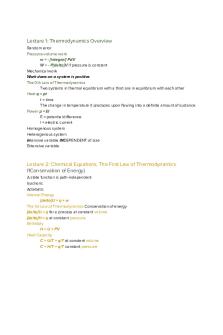
CHEM303 final exam review
- 4 Pages

Psychology Final Exam - Review
- 13 Pages
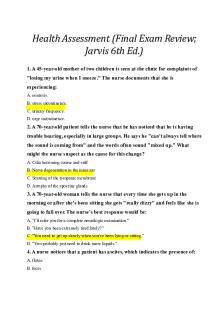
Jarvis Final Exam Review
- 12 Pages
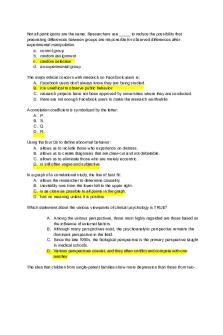
Final exam review
- 96 Pages
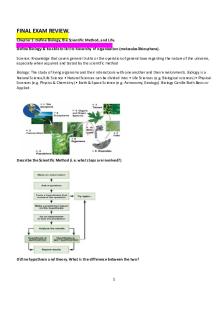
Final Exam Review
- 48 Pages
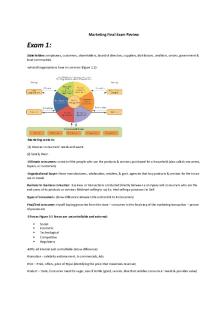
Marketing Final Exam Review
- 15 Pages
Popular Institutions
- Tinajero National High School - Annex
- Politeknik Caltex Riau
- Yokohama City University
- SGT University
- University of Al-Qadisiyah
- Divine Word College of Vigan
- Techniek College Rotterdam
- Universidade de Santiago
- Universiti Teknologi MARA Cawangan Johor Kampus Pasir Gudang
- Poltekkes Kemenkes Yogyakarta
- Baguio City National High School
- Colegio san marcos
- preparatoria uno
- Centro de Bachillerato Tecnológico Industrial y de Servicios No. 107
- Dalian Maritime University
- Quang Trung Secondary School
- Colegio Tecnológico en Informática
- Corporación Regional de Educación Superior
- Grupo CEDVA
- Dar Al Uloom University
- Centro de Estudios Preuniversitarios de la Universidad Nacional de Ingeniería
- 上智大学
- Aakash International School, Nuna Majara
- San Felipe Neri Catholic School
- Kang Chiao International School - New Taipei City
- Misamis Occidental National High School
- Institución Educativa Escuela Normal Juan Ladrilleros
- Kolehiyo ng Pantukan
- Batanes State College
- Instituto Continental
- Sekolah Menengah Kejuruan Kesehatan Kaltara (Tarakan)
- Colegio de La Inmaculada Concepcion - Cebu
